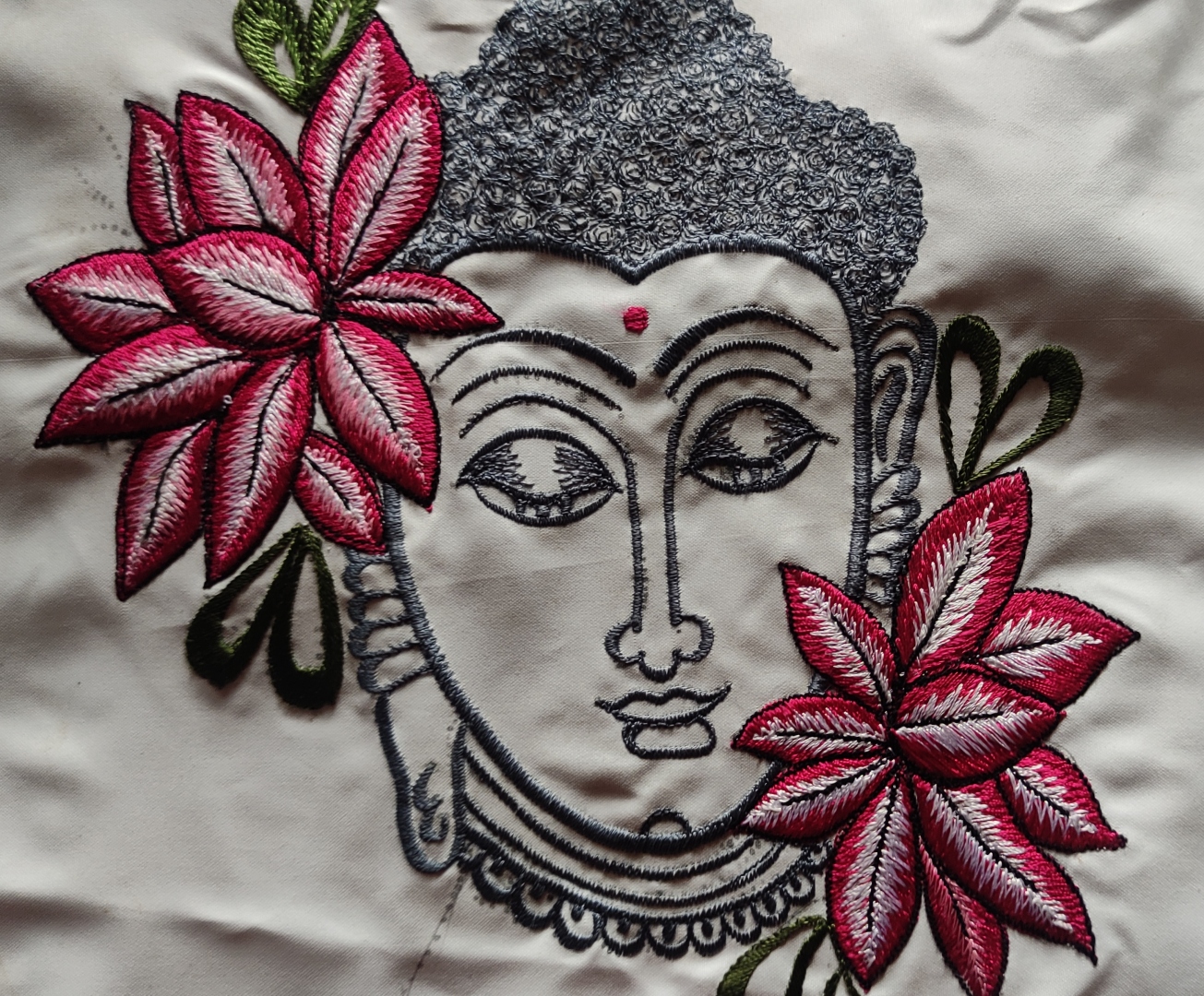Back in Gujarat, the Kheredia brothers couldn't adjust to schooling due to their poor Gujarati and Sanskrit. Their father, who was a skilled tailor himself, urged them to take up the art of manual machine embroidery as a means of livelihood

A quaint little apartment in the heart of Panaji is home to two veteran embroidery artists, Bhaskar (70) and Sudhir Kheredia (65). Originally from Rajkot, Gujarat, the brothers were born and brought up in Zanzibar, Tanzania, a place their father had migrated to in search of greener pastures.
However, during the 1964 Zanzibar revolution, the family of 9 brothers had to leave everything behind and return to India. Back in Gujarat, the Kheredia brothers couldn't adjust to schooling due to their poor Gujarati and Sanskrit. Their father, who was a skilled tailor himself, urged them to take up the art of manual machine embroidery as a means of livelihood.
Thus began their humble journey in the world of tailoring and embroidery, in India. “Back then we would charge 1 anna for fall and beading work for sarees. Today, the same costs around 100 rupees,” remarked Bhaskar. Somehow, they managed to sustain themselves until the situation in Gujarat got tense due to the Hindu-Muslim conflicts and riots.
“During this time, it was dangerous to step into the marketplaces. Sudden curfews were imposed and we couldn’t get back home until the next day. Movement of people became difficult and unsafe,” he added. As a result, their youngest brother moved out and eventually reached Goa, where he started a tailoring shop. Sudhir and Bhaskar migrated to Goa soon after.
Today, they make impeccable embroidery designs on their manual machine. They cater to many 5-star hotels in Goa, Goa Police, Indian Navy, schools, government offices, IFFI, Kala Academy and many cultural events and institutions. They also cater to temples, mosques as well as Christian artworks for events like weddings, communions and see many priests visiting them and commissioning beautiful, one-of-a-kind embroidery work to adorn their church altars and religious attires.
In all these years, they have not made elaborate efforts to advertise their work, but receive all their orders through word of mouth. “Some of our younger clients suggest we build an online presence, but we are not tech savvy and do not have anyone that can guide us to the online world,” said Bhaskar.
Once, during an art festival near their apartment in Fontainhas, someone discovered their artwork and spread the word. “We had an influx of foreigners in our house that day and they were so fascinated by everything,” recalled Sudhir. One person from Switzerland immediately got a metre of fabric and commissioned them to embroider certain Hindu gods, deities and scriptures for him. This was followed by many orders from foreigners as well.
While creating logos on uniforms, which forms a big bulk of their livelihood, they manage to finish up to 28 pieces a day, only after working continuously from early morning till late evening. Some artworks even take 25 days to a month to be completed. They sometimes never sketched beforehand while creating some of their best pieces. “We move our hands and the needle wherever our hearts and mind guide us, and it leads us to a beautiful artwork,” the duo recounted in chorus.
With great art also comes plagiarism. The fact that in this day and age everything can be replicated and printed through computers, worries them. The duo revealed how even deceiving photocopies of artworks are sold at a price higher than the original artwork’s value itself. Bhaskar also recounted incidents of clients who shifted to computerised work due to the attractive pricing. But, they came right back to the Kheredia brothers after realising that their quality of handwork can never be produced by a computer. “We work very painstakingly, but we do it to perfection and that is our only satisfaction,” he said joyfully.
“Earlier there was value for an artist which is lost now,” expressed Sudhir. He further opined that only a diamond merchant can recognise the value of a true diamond. Likewise, only a true art enthusiast will recognise the intricacies of an artist’s hard work and not encourage cheap, unoriginal art. The duo enthusiastically showcased their works to The Goan. Many pieces dated back twenty to thirty years and were in a pristine, spotless condition with not a thread hanging out, despite being stored quite casually. Thus proving the quality of their work. Holding an embroidered piece of the Taj Mahal, Sudhir chuckled and said, “Shah Jahan made Taj Mahal in Agra, I embroidered a Taj Mahal in Panaji.”